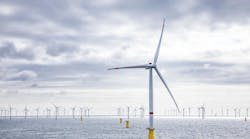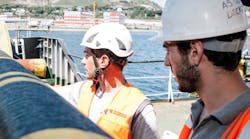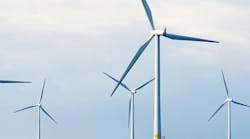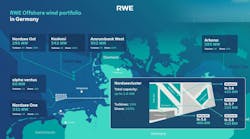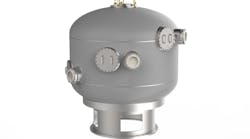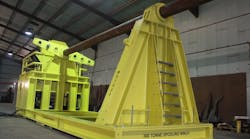Editor's note: This story first appeared in the 2023 Offshore Wind Special Report, which published within the September/October 2023 issue of Offshore magazine.
By Chris Finnigan, Xodus
It is common knowledge that existing cable manufacturers will not meet the global demand, assuming all projects announced today are built on schedule, utilizing currently established manufacturing capacity.
Xodus recently provided a global market forecast to the industry for interconnectors and export cables to assess excess vessel demand. The Subsea Power Cables Market Forecast offered a comprehensive review of interconnector and export cable demand and manufacturing capacity.
The findings indicate there is surplus demand for vessels, though high-voltage direct current (HVDC) cable manufacturing could cause bottlenecks in the late 2020s. There is likely to be huge demand for interconnectors and export cables for offshore wind farms in the next decade.
There is massive capital investment required to both build increased manufacturing capability and train the specialist expertise required. There are also local planning constraints around building the manufacturing facilities, in the same way there would be with any other project.
This is turning into a supplier market. For most cable manufacturers now, companies must pay a percentage of the total contract value upfront just to secure a manufacturing slot. More established offshore wind markets are likely to see projects delayed due to manufacturing constraints. The UK and Europe are already starting to feel this challenge, and the Asia-Pacific and the US are likely to follow suit soon.
Enabling transmission infrastructure is another challenge where HVDC interconnectors are in high demand. For example, with UK transmission infrastructure investment, regulated companies must wait for Ofgem to fund those projects. If the cable manufacturers can get a developer that has equity to invest rather than, for example, a project that requires taxpayer funding with lengthy approval processes, they can react a lot quicker and more commercially in a competitive environment. In this instance, Xodus sees that the UK is at a competitive disadvantage in this market because regulated developers do not have the flexibility to spend in that way.
This is without considering the further challenges relating to electrification of offshore oil and gas production facilities, which is likely to require connection to an onshore transmission system via power cables from shore, tie-in to an offshore transmission system or some kind of offshore renewable energy generation, such as offshore wind, creating even more demand for cables.
Although this is a global issue, local factors can mean that cable manufacturing isn’t the only route cause of delays. In the US, for example, there are clear supply chain issues related to the Jones Act, which states that only US-flagged ships, built in the US and crewed by Americans, can move cargo around the country. Currently, no US-flagged vessel has the capabilities to efficiently install offshore turbines at sea.
While there are plans for the construction of such installation vessels, most notably Dominion Energy’s $500 million offshore wind turbine installation vessel, this will delay the burgeoning offshore wind industry in the US and therefore the need for cables.
However, global demand is increasing year on year and will continue to do so with the world’s net-zero commitments drawing closer. There are several challenges associated with increasing supply quickly to match demand. The process is capital intensive and complex, with large bespoke facilities needed to be designed and built. There is a need for specialized, often custom-made, equipment once the manufacturing plant has been built.
Even with additional capacity added there is still a risk of bottlenecks in future supply. The number of planned interconnectors is expected to satisfy the demand up to 2035. However, this will be limited if manufacturing capacity fails to meet demand or it is faced with delays outside of the project control.
By providing a deeper understanding of the factors influencing successful cable manufacturing and installation, the forecast highlights the pressing need to increase cable production if we are to hit net-zero targets.

